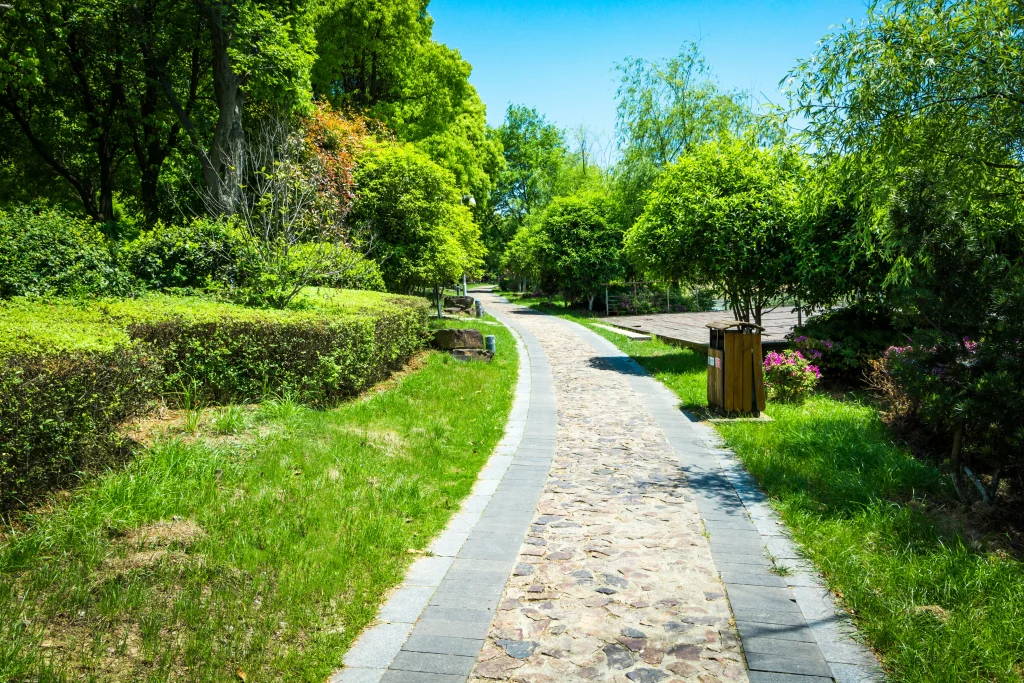Denver’s climate presents challenges for homeowners seeking sustainable outdoor spaces.
Traditional lawn care often struggles against water restrictions, intense UV exposure, and temperature fluctuations but rock landscaping ideas offer a practical solution that thrives in Colorado’s demanding environment.
This article presents 20 simple, practical rock landscaping ideas you can implement in your yard. Each concept addresses specific challenges Colorado homeowners face while creating attractive, functional outdoor environments that comply with local water regulations.
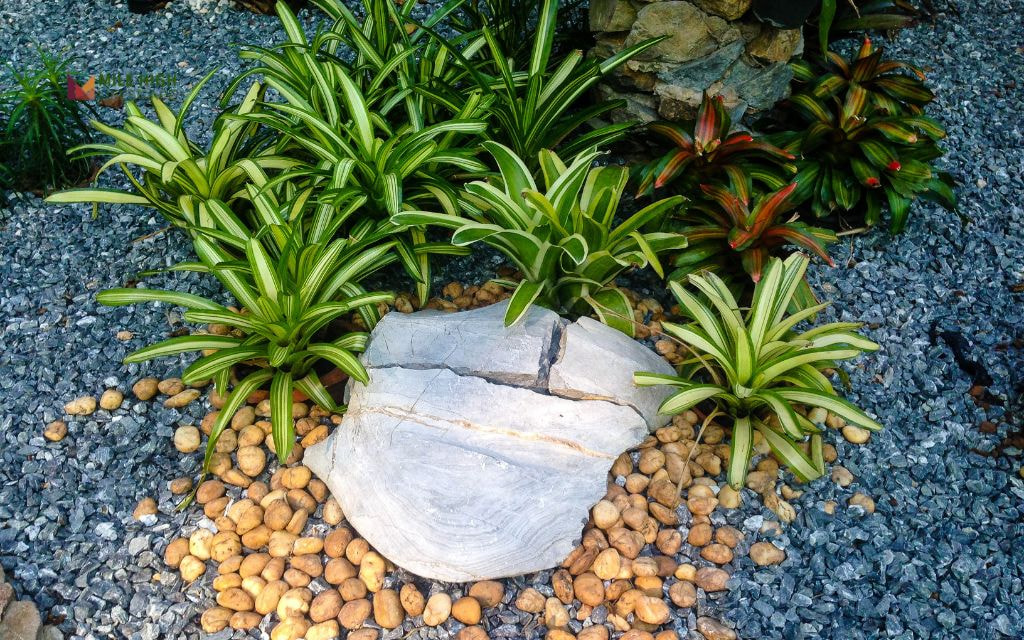
20 Simple Rock Landscaping Ideas for Denver Lawns
#1: Rock Beds Around Trees and Shrubs
Creating protective rock rings around tree bases eliminates competition from grass roots while conserving precious soil moisture. This approach reduces weed growth and provides clean, defined edges that enhance your property’s professional appearance.
Mix different rock sizes to create visual depth. Combine 2-3 inch river rocks with fist-sized accent stones for natural variation. Plant drought-tolerant groundcovers like sedum or creeping thyme between rocks to soften hard edges while maintaining water efficiency.
Position rocks 6 inches from tree trunks to prevent moisture retention against bark. This landscaping idea with rocks and stones protects root systems and creates attractive focal points

#2: Decorative Rock Borders Along Walkways and Driveways
Line pathways with pea gravel or crushed granite contained by metal edging for crisp, professional borders. This technique defines traffic areas while preventing soil erosion during Denver’s intense summer storms.
- Install flat stepping stones through grassy areas to create durable pathways that withstand foot traffic.
- Choose native Colorado sandstone or imported flagstone based on your budget and aesthetic preferences.
- Add solar path lights between rocks for evening safety and ambiance.
These energy-efficient fixtures charge during Colorado’s abundant sunshine and illuminate walkways without increasing utility costs.
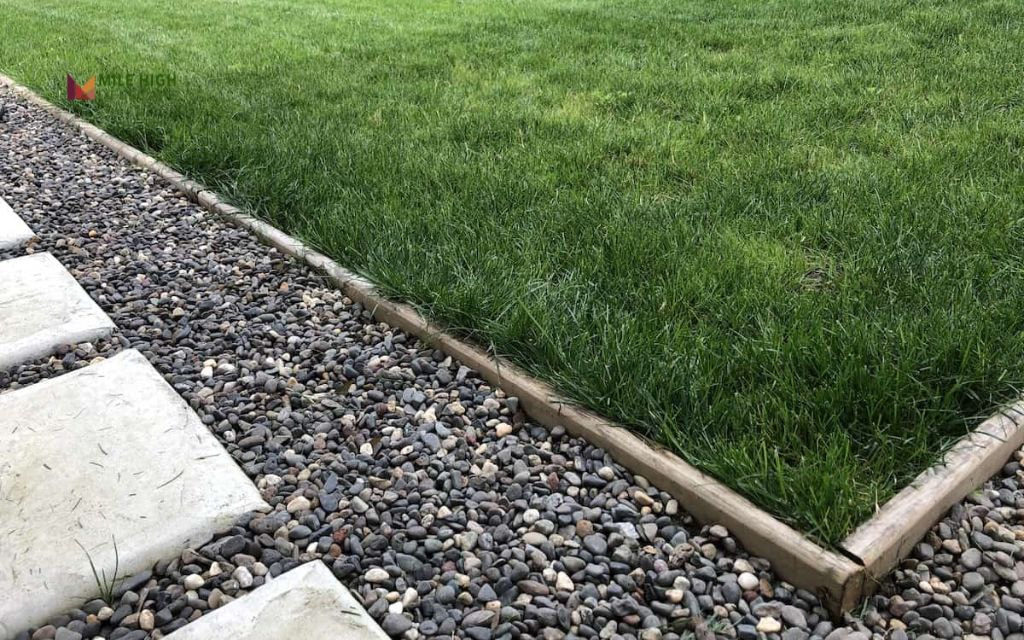
#3: Xeriscape-Inspired Rock Gardens
Design minimalist rock gardens featuring native succulents, yucca, and ornamental grasses that thrive in Denver’s challenging climate. These ideas for landscaping with rocks are the best because it requires minimal irrigation once established.
- Use large boulders as anchor points surrounded by smaller river rocks to create natural-looking compositions.
- Plant drought-resistant flowering species like penstemon and blanket flowers for seasonal color.
- Arrange rocks in odd-numbered groupings to achieve pleasing visual balance.
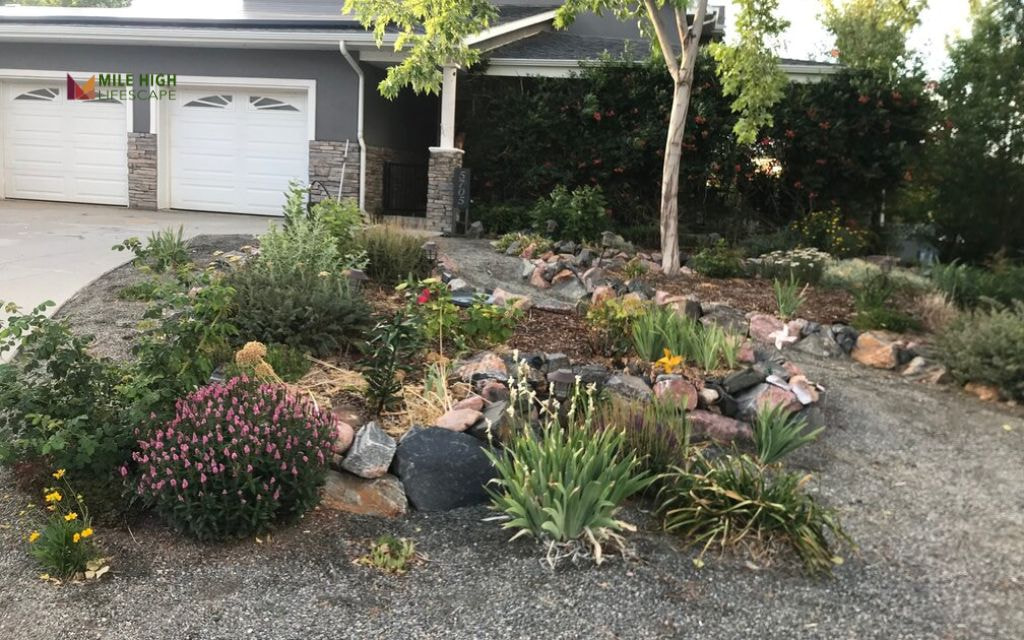
#4: Rock Mulch for Flower Beds and Vegetables
Replace traditional organic mulch with decorative rock for longer-lasting groundcover that never needs replacement.
- Choose lighter-colored rocks to reflect intense Colorado sunlight away from plant roots.
- White or tan gravel prevents soil overheating during summer while maintaining consistent temperatures through seasonal changes.
- Apply rocks 2-3 inches deep around established plants, keeping material away from stems to prevent moisture-related diseases.
This technique works particularly well with perennial beds and vegetable gardens that benefit from consistent soil conditions.
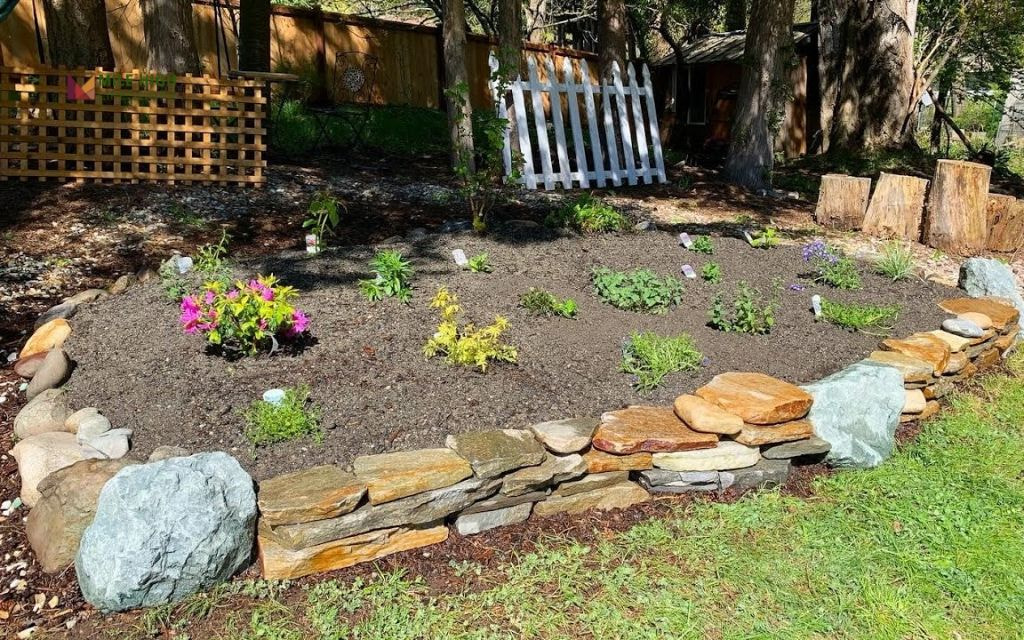
#5: Flat Rock Patio and Seating Areas
Install flagstone or large flat river rocks to create natural outdoor living spaces that blend seamlessly with Denver’s mountain landscape.
- Combine flat rocks with pavers or decomposed granite for textural contrast that adds visual interest.
- Mix materials in proportions that complement your home’s architecture while maintaining functional requirements for furniture placement.
- Arrange large boulders as natural seating elements or sculptural accents.
These rock landscaping ideas provide durable surfaces that require no ongoing maintenance beyond occasional sweeping.
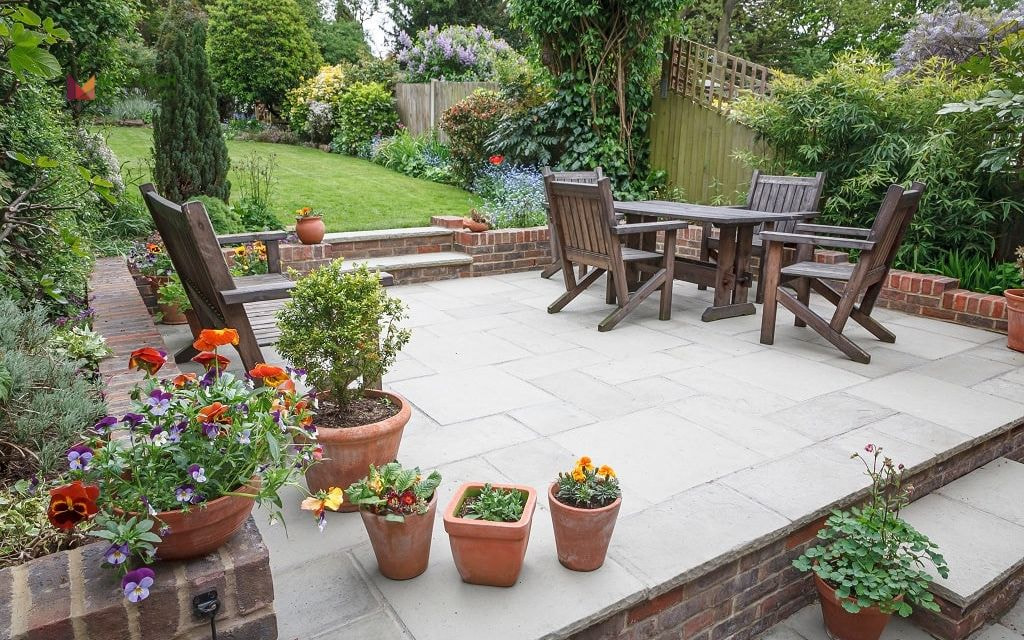
#6: Rock Pathways for Garden and Backyard Access
Construct durable pathways using pea gravel or decomposed granite that allow rainwater infiltration and provide stable walking surfaces.
Edge pathways with larger stones or concrete curbs to prevent material migration during heavy rains. This containment approach maintains clean lines while protecting adjacent planted areas from gravel intrusion.
Integrate stepping stones at comfortable walking intervals for enhanced accessibility.
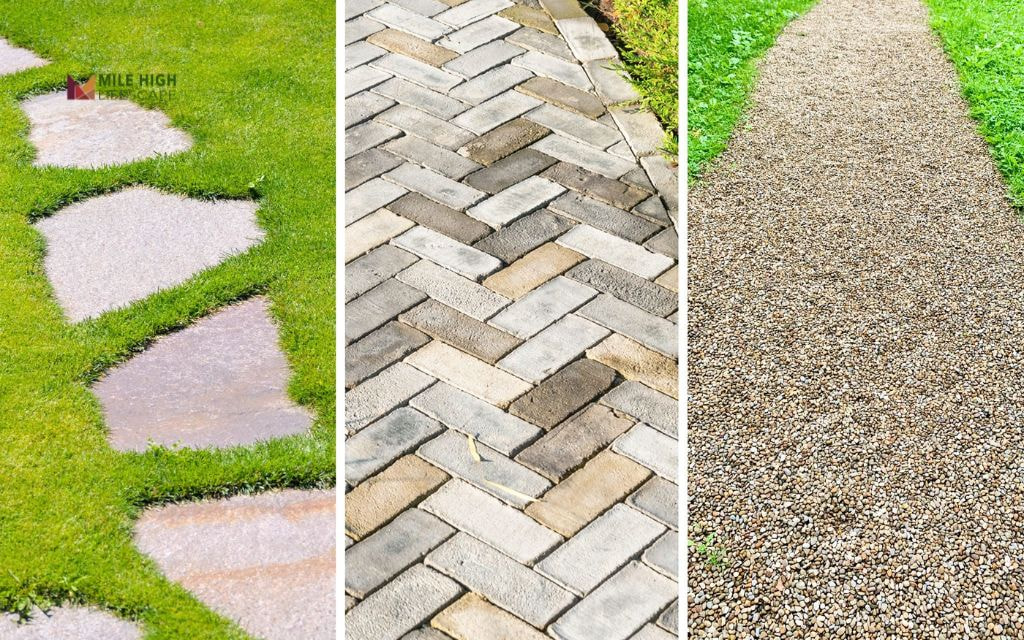
#7: Dry Creek Beds and Waterwise Drainage Solutions
Build decorative dry creek beds using mixed river rock sizes to manage stormwater runoff.
Plant native bunch grasses along creek bed edges to stabilize soil and create realistic transitions between rock and planted areas. Select species like buffalo grass or blue grama that establish quickly and require minimal irrigation.
Size rocks appropriately for expected water flow, using larger stones in potential high-flow areas and smaller material for gentle slopes.

#8: Rock Retaining Walls and Terraces
Use large boulders or carefully stacked stone walls for effective slope management that prevents erosion. These landscaping with rocks ideas solve challenging topography issues common in Denver’s foothills communities.
Incorporate planting pockets within wall construction for color and textural variety. Fill gaps with drought-tolerant perennials that soften hard surfaces while requiring minimal supplemental irrigation. Create tiered garden beds that maximize planting opportunities on sloped sites.
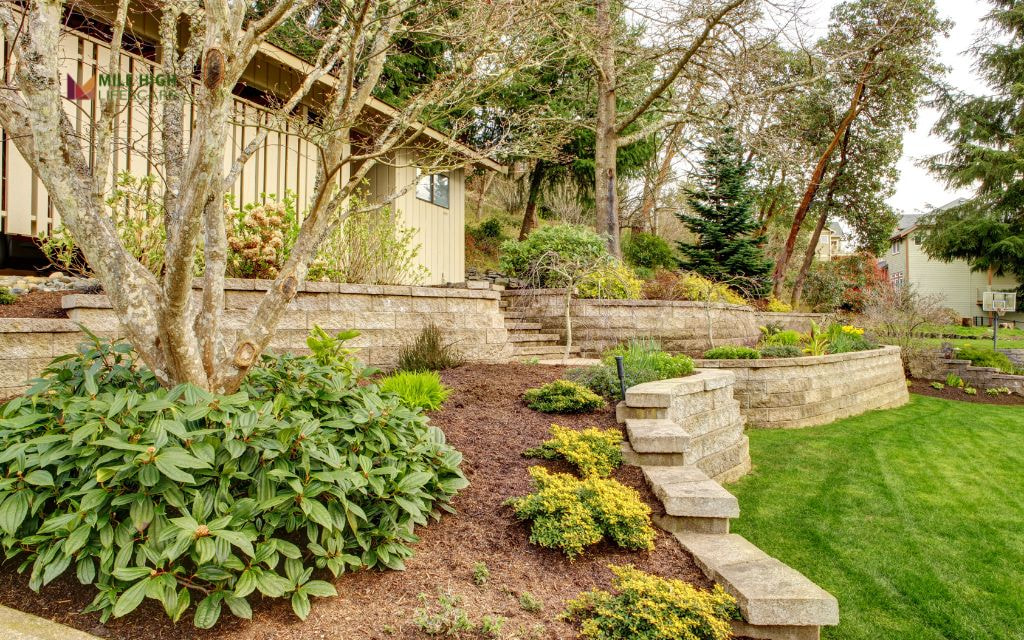
#9: Rock and Mulch Combinations
This rock garden landscaping ideas approach allows flexibility in plant selection and maintains consistent aesthetic appeal across diverse growing conditions.
- Use mulch in plant-heavy areas where nutrients are beneficial and rock in open beds requiring minimal maintenance.
- Choose color palettes that unify different materials throughout your landscape design.
- Coordinate rock tones with mulch colors to create cohesive transitions between different garden areas.

#10: Colored Gravel
Create geometric or abstract patterns using colored gravel that adds artistic elements to functional landscape areas.
- Outline flower beds or patio areas with contrasting gravel colors that define spaces without requiring permanent structures.
- Use earth tones that complement Colorado’s natural landscape palette.
These installations remain visually striking while requiring minimal ongoing maintenance.
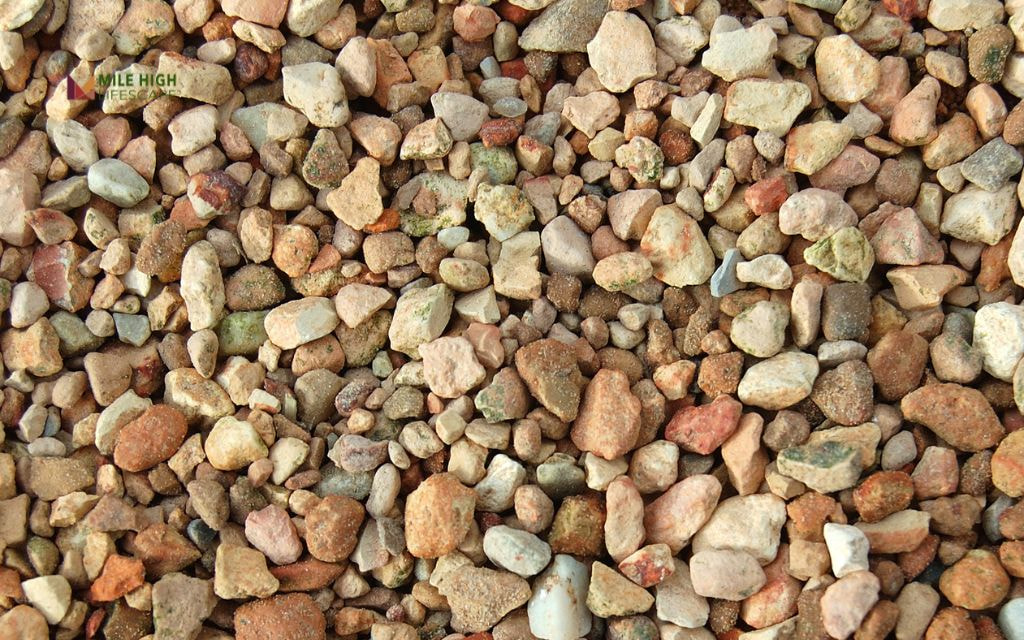
#11: Rock Accents Around Water Features and Pools
Position smooth river rocks around pools and fountains to create cohesive transitions between water elements and surrounding landscape. Combine rocks with drought-tolerant plants that provide lush appearances.
Select rounded stones that provide comfortable walking surfaces, create natural-looking borders and complement water feature aesthetics.
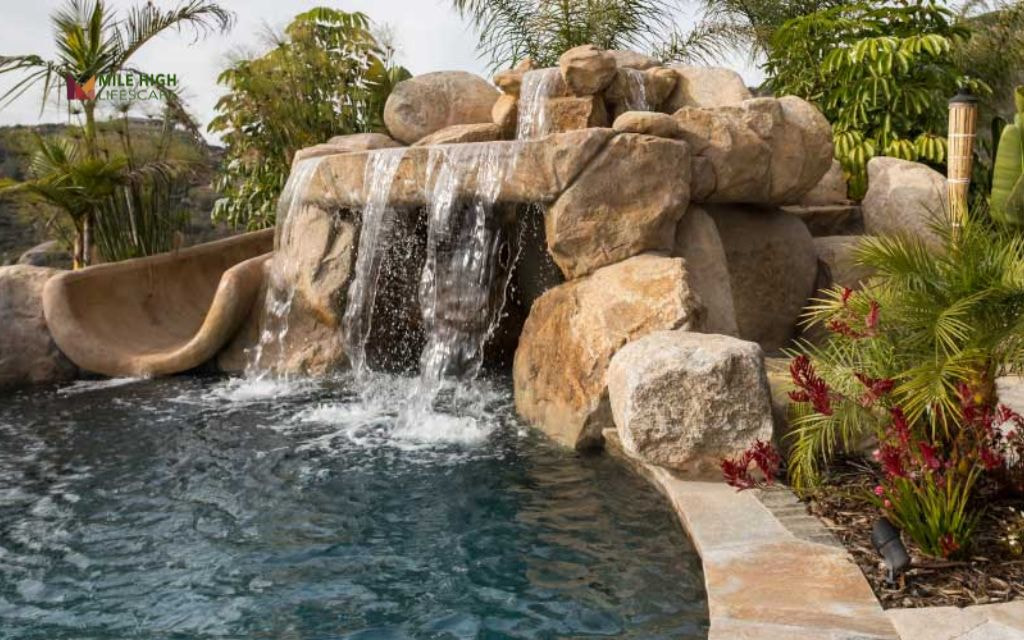
#12: Rock Borders for Raised Beds and Vegetable Gardens
Define garden bed edges using crushed stone or cobblestones that prevent soil erosion while maintaining tidy appearances. These borders work particularly well with drip irrigation systems that require defined watering zones.
Choose materials that complement your home’s architecture while providing clear separation between cultivated and uncultivated areas.
Remember to install borders at appropriate heights to contain soil but also allow easy access for planting and harvesting activities.
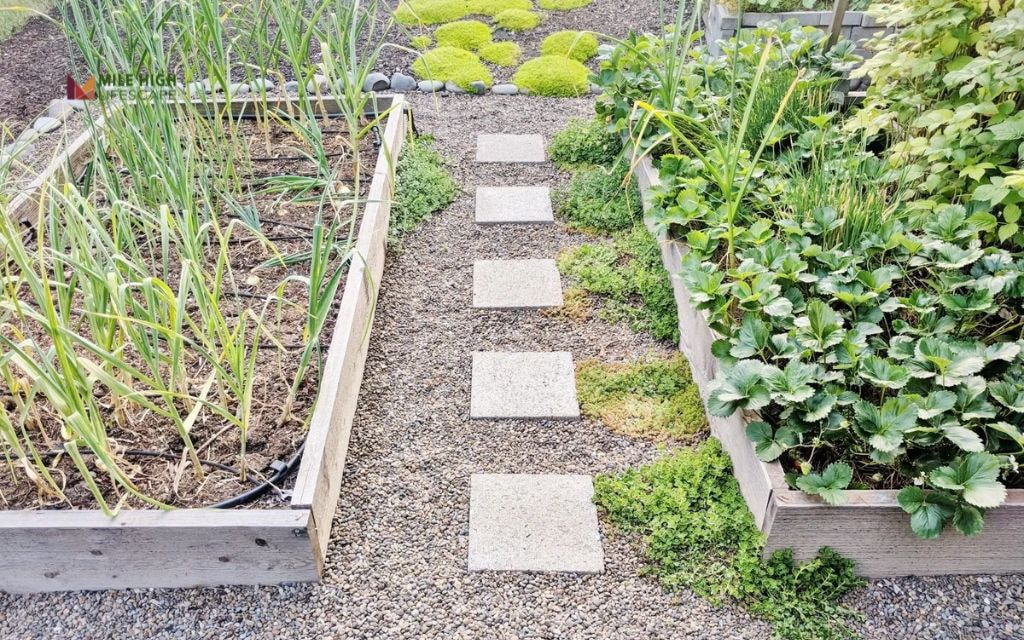
#13: Rock Planting Pockets and Containers
Embed large rocks with carved or natural pockets for succulents and small shrubs that create microhabitats within xeriscaped areas.
Combining container plantings with surrounding gravel for modular designs allows seasonal changes without disturbing permanent installations. This flexibility accommodates evolving preferences while maintaining structural elements.
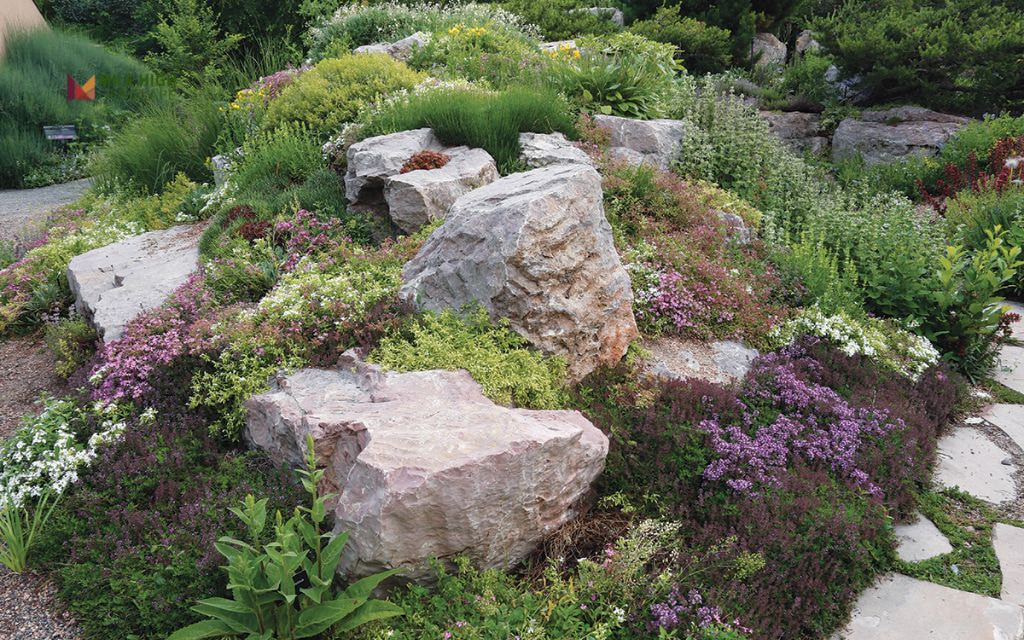
#14: Rock Steps and Stairways on Slopes
Construct natural-looking steps using flat boulders or flagstone. Combine stone treads with gravel or mulch landings for comfortable footing during wet conditions.
Size steps appropriately for comfortable use while maintaining visual proportion within your overall landscape design. These installations enhance accessibility while creating attractive transitions between different yard elevations.
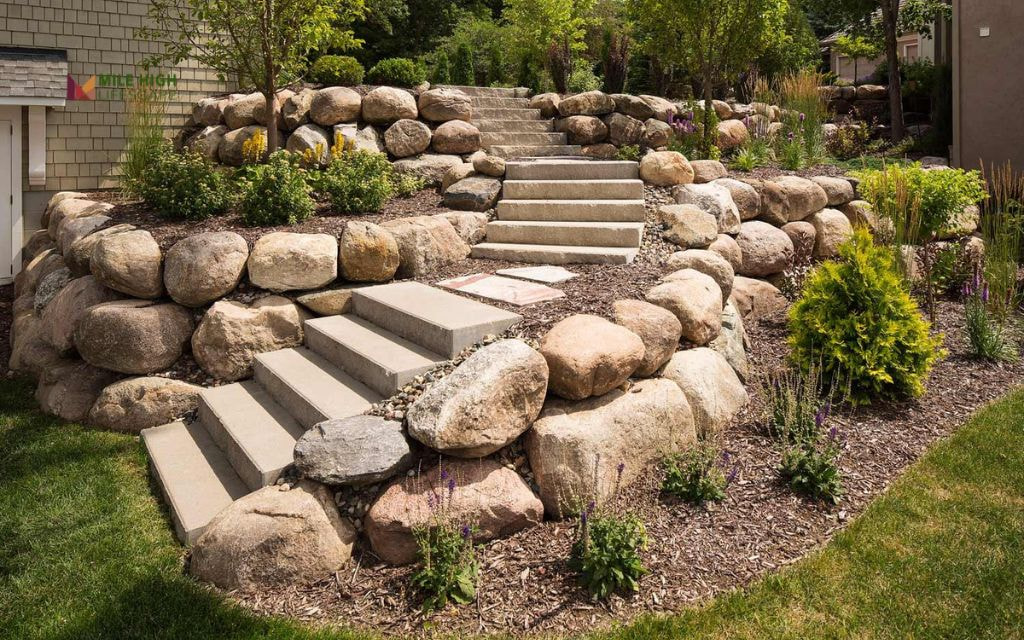
#15: Gravel Seating Pads and Fire Pit Circles
Create circular gravel areas for outdoor seating or fire pit installations that provide stable, well-draining surfaces for entertainment areas. Edge these spaces with large stones or pavers to define boundaries while preventing material migration.
Choose gravel sizes that remain comfortable underfoot plus adequate drainage during precipitation events.
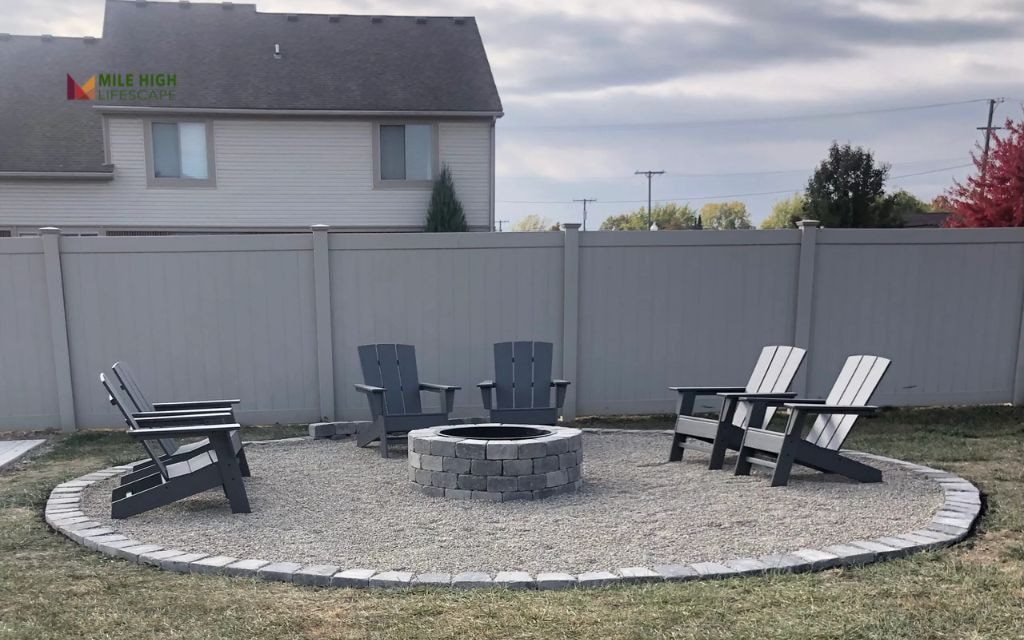
#16: Rock Garden Borders Along Fences and Property Lines
Install rows of large rocks or boulders as natural barriers that provide privacy. Besides, it also complements Denver’s mountain landscape setting.
- Try to integrate climbing plants or ornamental grasses for seasonal variety without compromising drought tolerance.
- Position rocks to create informal barriers that discourage foot traffic while maintaining welcoming appearances for neighbors and visitors.
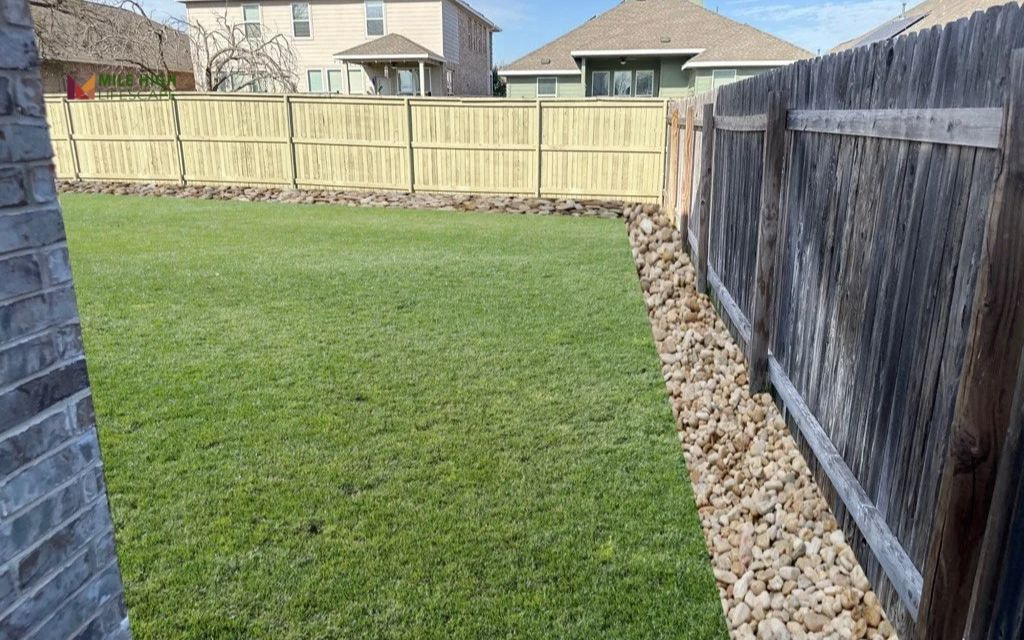
#17: Xeriscape Rock Medians and Traffic Islands
Design rock beds for median strips or traffic islands that eliminate irrigation requirements while providing attractive landscape elements. These landscaping with rock ideas offer maintenance-free solutions for challenging growing conditions.
Combine rocks with drought-resistant plantings and occasional signage or lighting features for functional yet attractive installations that comply with municipal requirements.
These designs demonstrate environmental responsibility while maintaining neighborhood aesthetic standards.

#18: Low Rock Walls for Garden Art and Sculptural Features
Stack flat stones or arrange boulders into artistic garden walls that serve as sculptural elements. This idea also provides functional benefits like wind protection or space definition. Incorporate native plants around edges for natural transitions.
Design walls at heights that complement surrounding landscape elements while serving intended functional purposes.
These rock bed landscaping ideas create focal points and require no ongoing maintenance beyond occasional plant care.

#19: Rock and Grass Hybrid Landscaping
Mix strategic rock beds with native turf grasses or clover for balanced landscapes that reduce overall water consumption. This approach accommodates diverse household needs while maintaining environmental responsibility.
Position rock and grass areas to optimize maintenance efficiency while creating visually pleasing compositions that serve multiple functions.
These grass and rock landscaping ideas work particularly well for pet-friendly yards for active use combined with attractive landscaping that enhances property value.
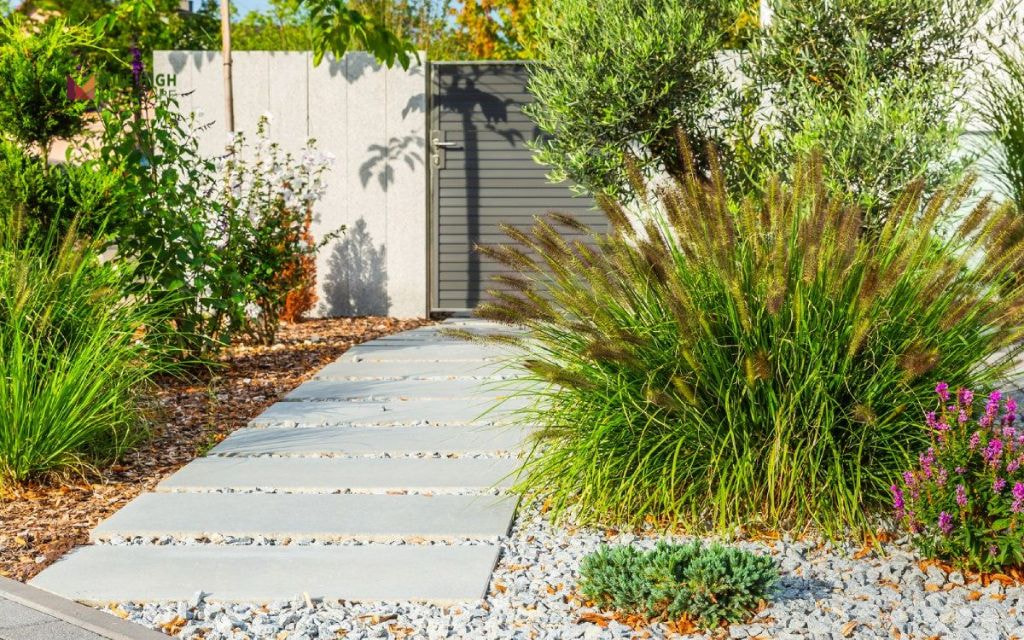
#20: Gravel and Rock for Driveways and Parking Areas
Use crushed rock or gravel for permeable parking surfaces that reduce stormwater runoff while providing stable vehicle access. These installations improve drainage while offering cost-effective alternatives to traditional paving materials.
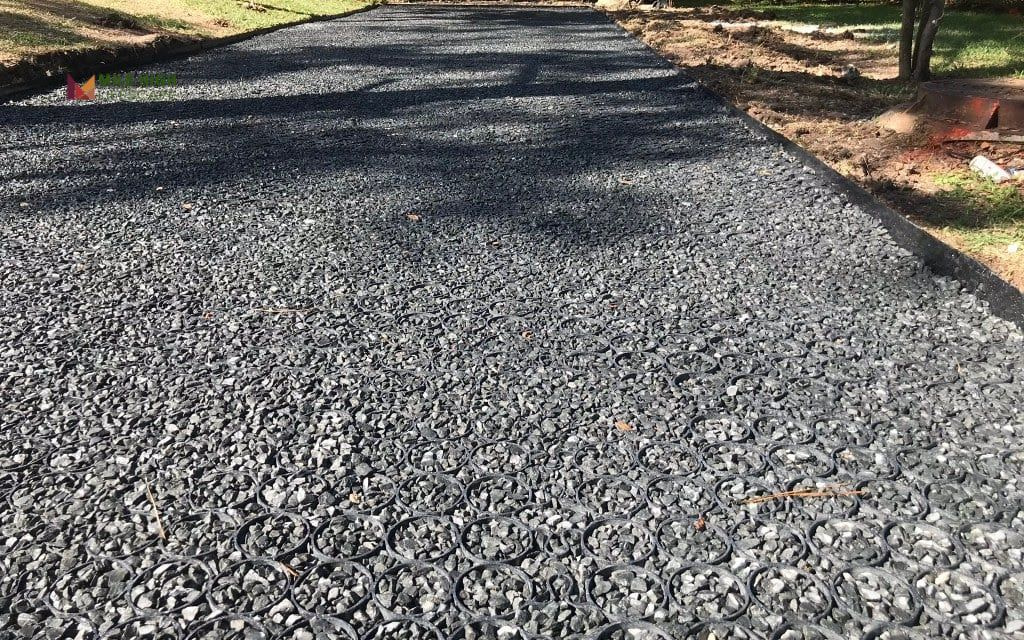
Maintenance Tips for Rock Landscaping in Denver
Regular maintenance ensures rock installations remain attractive and functional:
- Remove accumulated debris and fallen leaves from rock beds monthly
- Address weed invasion promptly to prevent establishment in rock installations.
- Apply pre-emergent herbicides in early spring when soil temperatures reach optimal germination conditions for common Denver-area weeds.
- Refresh rock layers every 2-3 years to maintain proper coverage depth and visual appeal.
- Add new material to replace stones that have migrated or settled below optimal levels.
- Monitor soil moisture around planted areas within rock installations.
- Adjust irrigation schedules seasonally to accommodate changing plant needs while maintaining water conservation goals.
Conclusion
Rock landscaping ideas provide low-maintenance solutions suited to Denver’s challenging climate and water restrictions. These approaches address practical concerns while creating beautiful outdoor spaces that enhance property value and neighborhood appeal.
For nearly 2 decades, Mile High Lifescape has been proudly serving the Denver Metro area as the go-to landscape company.
With a reputation for excellence, we offer a comprehensive range of friendly and professional landscaping and lawn care services, especially rock landscaping service. If you need support from professional rock landscapers near me, count on us to transform your outdoor space into a beautiful oasis you dream of.
Contact Mile High Lifescape for expert design and installation services today!
Frequently Asked Questions (FAQs)
Can I combine rocks with native plants in my yard?
Yes, you can combine rocks with native plants in your yard. Try to choose drought-tolerant species like penstemon, yucca, and ornamental grasses that complement rock installations while requiring minimal irrigation.
What is the cheapest way to landscape with rocks?
Start with locally sourced materials like Colorado river rock or crushed granite, which cost less than imported stones. Focus on high-impact areas first, such as borders around existing plants or small accent beds. Buy materials in bulk when possible and consider DIY installation for simple projects like pathways or mulch replacement.
What is the best size rock for pathways versus beds?
Use pea gravel or 3/8-inch crushed granite for pathways, as these sizes provide stable walking surfaces while allowing proper drainage. For decorative beds, mix 1-3 inch river rocks with larger accent stones to create visual interest. Avoid rocks smaller than 1/2 inch in beds, as they tend to migrate and require frequent replenishment.
What rock looks best for landscaping?
Choose materials that complement your home’s architecture and Colorado’s natural landscape. River rock in earth tones works well for most applications, while flagstone provides elegant options for patios and pathways.
How often do I need to refresh rock landscaping?
Well-installed rock landscapes require refreshing every 2-3 years to maintain proper coverage depth and appearance. Add new material to replace stones that have settled or migrated.
